Yoga is a combination of specific breathing techniques (pranayama), physical postures (asanas), relaxation, and meditation that helps you connect to your mind, body, and soul1.
Though Yoga is a very traditional practice, it is considered more as a science than just philosophy or religion. Yoga believes that every human being exists in this world in not just one (physical dimension) but five dimensions; pranamaya kosha (vital body), vijanamaya kosha (intellectual body), manomaya kosha (psychic body), annamaya kosha (physical body) and anandamaya kosha (causal body). They altogether aim at bringing about a balance in all aspects.
There are certain asanas in Yoga that, apart from keeping illness at bay, give more benefit to some specific organs. One such yogic posture is the Vrikshasana, which may be beneficial to one of the vital organs of the body, the brain2. However, the benefits need further studies to be proven.
Did you know?
Vrikshasana is a standing pose. The name is derived from the word ‘Vṛkṣa’ meaning tree. So, it is also called the ‘Tree pose’. This asana is named so that the final posture looks like the shape of a tree3. It helps us achieve peace of mind and benefits those who are facing problems such as anxiety and depression. It increases concentration, immunity, and stamina. Moreover, it helps to build self-esteem and self-confidence. It has a calming and relaxing effect and stretches the body from head to toe.
Vrikshasana is one yoga posture underrated and not well-known for people with diabetes! People with diabetes are prone to altered body orientation due to neuropathy. Regular practice of Vrikshasana is believed to build balance and coordination among these people6.
Dr. Siddharth Gupta, B.A.M.S, M.D (Ayu)
Any posture in Yoga must be done using the correct technique, to get the maximum health benefit. Following the proper method also helps to avoid any injuries. The steps for doing Vrikshasana are as follows:
Did you know Vrikshasana might aid in premenstrual symptoms? Regular practice of Vrikshasana might help women with handling premenstrual symptoms such as muscle cramps in the abdomen and legs. It is believed that Vrikshasana strengthens the leg muscles and tendons10.
Dr. Rajeev Singh, BAMS
Vrikshasana is a common standing posture. It is the first standing balancing posture that most beginners learn5. This one-legged pose has various benefits as follows:
Being balanced in your body is very essential to have a sense of stability. Vrikshasana may help improve the strength of the muscles that help one keep erect and balanced. The extended arms in this posture help challenge the muscles that control body position. Vrikshasana may specifically stimulate the abductor group of muscles of the hip joint, which are the muscles that help move the thigh away from the body. This group includes the superior gluteus maximus, gluteus minimus and medius. This benefit is obtained even if the tree pose is done with wall support, using one or both arms for the support. It may prove to be valuable to beginners in the field of Yoga, who have stability issues.
This pose may especially involve the ankle muscles, rather than the thigh, to bring about better balance and it also improves blood circulation. Thus, it may benefit in conditions that may pose stability issues like cardiovascular disease, rehabilitation after injuries, and managing the symptoms of ADHD such as balance, stability, and more. You may gain lateral stability by practicing the Tree pose by standing close to a wall or chair5,6,7.
It may be beneficial in calming down the entire nervous system bringing about a sense of relaxation2. It may be valuable in improving the proprioception ability of a person, which is the ability to sense the body’s movements, position, and action8. Vrikshasana also helps to improve concentration, generate calm and balance the nervous system.
Due to this effect, it may help in conditions like depression and anxiety. In these conditions, the levels of a stress hormone called cortisol is elevated. Studies5 have demonstrated reduced levels of cortisol in those who practice yoga such as vrikshasana.
Balancing on one leg and assuming the final Vrikshasana posture requires focus. So, practicing this asana may help in increasing concentration levels. It was found in a study8 by Samantha et al., 2019 that Vrikshasana was beneficial to developing a concentration in patients with Attention Deficit Hyperactivity Disorder (ADHD) which is otherwise presenting as difficulty in concentration9.
Vrikshasana calms and relaxes the central nervous system and stretches the entire body. It strengthens the legs opens the hips and improves your neuromuscular coordination and endurance. It may thus be helpful for those who suffer from sciatica (nerve pain in the leg)2,4.
Yogic asanas, though largely beneficial, should not be sought as the go-to treatment for health issues. You must always consult a medical practitioner for your health issues so that he/she can examine you, assess your condition, and then provide an appropriate treatment protocol. Besides, to avoid any injuries, it is best to practice Yoga under the guidance of a qualified and trained Yoga expert.
Not just legs, Vrikshasana is believed to strengthen the shoulders as well. Vrikshasana involves raising the hands up and stretching which might stretch the shoulder muscles10.
Dr. Smita Barode, B.A.M.S, M.S.
Also Read: Benefits of Vayu Mudra and How to Do it By Dr. Ankit Sankhe
Some risks and precautions related to Vrikshasana are:
Any yoga posture must ideally be practiced under the supervision of a Yoga expert who can advise you on the safety of that particular asana for you.
Also Read: Benefits of Padmasana and How to Do it By Dr. Himani Bisht
Vrikshasana or the tree pose is a common standing Yoga asana. It has numerous benefits for the brain, immunity, spine, and stability. One may practice this posture regularly, preferably under the guidance of a Yoga trainer, who will advise you regarding the necessary precautions to be taken.
Also Read: Benefits of Anulom Vilom and How to Do it By Dr. Ankit Sankhe
The name Vrikshasana is derived from the word ‘Vṛkṣa’ which means tree. Hence, it is also referred to as the Tree pose3. It is the first single-legged standing pose for beginners5.
Steps in Vrikshasana are: Stand erect with your legs apart. The distance between them should be about 2 inches. Focus on any point straight ahead. Exhale, bend your right leg, and place the sole of the right foot on the left inner thigh, with the heel of your right leg touching the perineum. Now, breathe in and raise your arms, joining your palms together to form the Namaste Mudra. Hold this stance for 10-30 seconds. Breathe normally while holding the pose. Now, exhale and bring your arms down. Bring your right leg too to the starting position. Repeat the same method on the left side3.
Vrikshasana must preferably be done under the supervision of a qualified and experienced yoga teacher who can advise you on the number of times that you may do this pose safely.
Senior citizens who have instability issues may show an improvement in lateral stability by practicing the Tree pose while standing close to a wall or chair5. To avoid the possibility of falling, it is recommended that older adults practice this pose under the guidance of a Yoga expert.
While Vrikshasana is said to help people having instability issues5, it is contraindicated in those who might have giddiness3. If you are suffering from vertigo, it is best to consult a qualified medical professional before you start practicing this Yoga posture.
Disclaimer: The information provided here is for educational/awareness purposes only and is not intended to be a substitute for medical treatment by a healthcare professional and should not be relied upon to diagnose or treat any medical condition. The reader should consult a registered medical practitioner to determine the appropriateness of the information before consuming any medication. PharmEasy does not provide any guarantee or warranty (express or implied) regarding the accuracy, adequacy, completeness, legality, reliability or usefulness of the information; and disclaims any liability arising thereof.
Yoga is a rich treasure with techniques beneficial for physical, mental, and spiritual well-being. In this era of expensive pharmacotherapy with innumerable side effects, it is difficult to manage diseases like hyperthyroidism or hypothyroidism, cardiovascular conditions, obesity, and diabetes.
Therefore, introducing physical exercises like yoga can gradually hasten the recovery process. Though it evolved and flourished in India, the introduction of yoga in Western culture gained much popularity and has become a statement of an optimum lifestyle in the upper-middle classes1.
Yoga involves a lifestyle that requires maintaining certain postures (Asanas) along with controlling breathing, thoughts, and enchanting mantras (recital phrases), unlike other exercises that focus on muscle stress, repetitive movements, and heavy breathing. In yoga, body is relaxed and blood requirement is reduced. This is opposite to aerobics, zumba and other exercises that increase the workload on heart to pump more blood. Yoga triggers the neuronal hormones that add significant benefits to mental and spiritual well-being1.
One of the countless postures in yoga is the ‘Shoulder stand’, also known as Sarvangasana.
Did You Know?
Sarvangasana is a posture where the whole body is balanced on the shoulder and is therefore, also known as a Shoulder stand.
Sarvangasana constitute 3 words “Sarva”, “anga” and “asana”. “Sarva” means “all”, “anga” means body part and “asana” means posture. As the name indicates, Sarvangasana is the posture involving the whole body.
It is referred to as the Queen of asanas because it maintains the physical and mental health of an individual2.
Asanas that involve postural inversion are not part of traditional practice, as the three classic hatha yoga texts do not mention these postures. They have only recently gained more popularity with increased visibility through social networks3. It is the most effective way to streamline the body and mind. It may help in attaining peace, containment and happiness4.
Sarvangasana or shoulder pose is to be practiced in the presence of trained yoga professionals. The steps to be followed while performing this asana are:
Do not strain your body by holding the final position for long during the initial practice. Increase the duration gradually from three to five minutes. Perform Sarvangasana only once during the yoga session2.
By regularly practising Sarvangasana, you can improve your posture, relieve back discomfort, and enhance overall spinal health. I recommend practising Sarvangasana (Shoulder Stand Pose) to alleviate stiffness in the back muscles caused by poor posture or prolonged standing. This pose involves stretching and lengthening the back muscles, helping to release tension and improve flexibility7.
Dr. Rajeev Singh, BAMS
Sarvangasana offers several benefits to improve physical and spiritual health. Some of the potential benefits are:
Sarvangasana may improve the blood supply to the brain. There is an increased influx of blood to the brain during the shoulder stand position. This increased influx can also help in nourishing the hair and hydrating the scalp, thus helping in preventing hair loss and improving hair growth.
An increase in blood supply to facial muscles may lead to glowing skin. The greater blood flow may also help in keeping ourselves active and energized2.
Sarvangasana may help in decreasing the production of thyroxin hormone responsible for causing hyperthyroidism. The inverted position during shoulder stand allows the heart to pump the blood to the brain and the thyroid gland and helps in curing thyroid-related disorders. The potential benefit of the blood flow during Sarvangasana is on respiration, increasing the digestive and excretory processes, and strengthening the nervous system, which is controlled by the thyroid and parathyroid glands. When the thyroid gland functions properly, all of the above-mentioned systems of the body work effectively2.
Kumar et al. 2017 mention a study5 involving 20 patients with diabetes (increased glucose level) subjected to 40 days of yoga, involving sarvangasana as one of the postures, showed a decrease in glucose levels and changes in insulin levels. The shoulder stand pose improves the functioning of pancreas, responsible for insulin production. The enhanced insulin production may help in decreasing the risk of diabetes. The involvement of asanas or postures in daily life does not have any adverse effects, and can be used as an alternate means to improve health4.
The shoulder stand may help in increasing the blood pressure of patients with low blood pressure. A study6 conducted by Naidu, S.T. et.al., 2015 on postural inversion in yoga and its effects on cardiovascular parameters, mentions that there was an increase in diastolic and systolic blood pressure during the sarvangasana. The increase in blood pressure depends on various factors especially the population (healthy or on patients with blood pressure fluctuations) performing the sarvangasana3.
Over the years, I have found that practising Sarvangasana (Shoulder Stand Pose) can help counteract the pooling of blood in the legs and abdomen. This pose involves elevating the legs above the heart, which promotes return of the blood from the organs and improves overall circulation7.
Dr. Siddharth Gupta, B.A.M.S, M.D (Ayu)
Also Read: Benefits of Halasana (Plough Pose) and How to Do It By Dr. Himani Bisht
Some of the contraindications related to Sarvangasana are:
The important point to consider while doing postural inversion is to perform it smoothly and slowly and it should be only practiced with a trained yoga teacher.
Also Read: Benefits of Prana Mudra and How to Do it By Dr. Himani Bisht
Tension and stress are part of everyday life, but they should not affect the mind and body. Performing sarvangasana helps de-stress by relieving the pain and increasing the blood supply to all parts of the body. However, it is necessary to follow precautions while performing sarvangasana to avoid the associated physical risks. Given the rising popularity of postural inversions in yoga, through social media, it is important to do additional research on the benefits and risks.
Also Read: Benefits of Bhramari Pranayama and How to Do it By Dr. Himani Bisht
Sarvangasana is also known as “shoulder stand”. It is an inversion posture where the whole body is balanced on the shoulder2.
People suffering from high blood pressure, slipped disc, vertigo, atherosclerosis, cerebral thrombosis migraine, pregnant and lactating women and people with diabetic retinopathy and who have undergone surgery should avoid shoulder stand. Sarvangasana should also be avoided in patients suffering from cold, flu and sinus problems2.
For beginners, the final position of Sarvangasana or shoulder stand should be held for a few seconds. It can be gradually increased with the practice for about three to five minutes2.
The shoulder stand or Sarvangasana may help in improving blood circulation and digestion. It may also help in rejuvenating the body and maintaining balance and posture of the body. Sarvangasana may increase blood pressure, which can be used as a potential benefit for patients with low blood pressure4.
This asana should only be performed once at the end of completion of other asanas during the yoga session. An easy relaxing posture after performing sarvangasana or shoulder stand is Shavasana (corpse pose)2.
Disclaimer: The information provided here is for educational/awareness purposes only and is not intended to be a substitute for medical treatment by a healthcare professional and should not be relied upon to diagnose or treat any medical condition. The reader should consult a registered medical practitioner to determine the appropriateness of the information and before consuming any medication. PharmEasy does not provide any guarantee or warranty (express or implied) regarding the accuracy, adequacy, completeness, legality, reliability or usefulness of the information; and disclaims any liability arising thereof.
There are different approaches to stay healthy.
Engaging in a regular physical activity routine can contribute significantly to overall well-being. It may also play a supportive role in managing certain health conditions. For example, exercises for diabetes may help manage sugar levels as part of a broader lifestyle management plan, under medical guidance1.
Among various forms of exercise, one simple yet effective option is the plank. This bodyweight exercise focuses on strengthening the core muscles, which can contribute to better posture, stability, and balance.
The plank exercise is widely regarded as one of the most effective movements for strengthening the core and abdominal muscles2,3. It engages several muscle groups simultaneously, including the hips, lower back, and abdominal region, contributing to improved posture, balance, and overall stability.
The number of calories burned during a plank exercise can vary depending on factors such as body weight, duration, and individual metabolism.
For example, a person weighing approximately 65 kilograms may burn around 3 calories per minute while holding a plank position4. You may observe the following benefits from plank exercising
In addition to supporting muscle growth and endurance, the plank exercise may also contribute to improved body balance, posture, and coordination5. Enhanced balance can help promote more efficient movement and may reduce the likelihood of placing undue strain on individual muscle groups during physical activity. As a result, incorporating planks into a well-rounded exercise programme can support safer and more stable performance, particularly during dynamic or high-impact workouts.
The core of your body consists of the spine, pelvis, and trunk, forming the foundation for stability and movement. Developing core strength can support better posture and enhance performance in a range of physical activities. The plank exercise is particularly effective in targeting four key muscle groups that make up the core: the transversus abdominis, which helps stabilise the spine; the rectus abdominis, important for spinal flexion; the oblique muscles, which aid in rotation and lateral movement; and the gluteal muscles (glutes), essential for hip support and lower body strength. Regularly practising the plank may assist in strengthening these muscles, thereby contributing to improved balance, coordination, and physical resilience during exercise2.
Practicing the plank pose daily can help to stretch your core muscle groups mentioned earlier. This has a lot of benefits, especially for those who engage in yoga.
Since the plank pose mainly works your core abdominal muscles, it is a great exercise to get rid of stubborn belly fat. Holding a plank for a few minutes each day can alone help to trump down belly fat and provide an appealing shape to your body. Regular practice of the plank exercise may also support improved body flexibility, particularly when performed as part of a balanced fitness routine. While the plank is primarily a strength-building movement, it engages multiple muscle groups, including the shoulders, hamstrings, calves, and the arches of the feet, which can help maintain or gently increase range of motion over time. Certain plank variations, such as side planks or forearm planks with leg lifts, further activate and stretch surrounding muscles, promoting greater mobility and control. Improved flexibility can contribute to more fluid movement, reduced muscular tension, and enhanced overall functional fitness6.
The plank posture helps to perfectly align the vertebrae (small bones) in the backbone. This can help reduce back pain and even delay the onset of or prevent back pain in old age. Moreover, since this pose strengthens your abdominal muscles, it will help support the weight of your body when walking upright. This will further help to prevent back pain7.
The plank pose strengthens the abdominal muscles and, through improved core stability, may also support muscle development in other areas of the body. Increased muscle mass is generally linked to higher energy expenditure, which can aid natural metabolic function. When practised regularly, the plank may contribute to better energy balance and appetite regulation8.
The plank exercise is a type of isometric exercise. Isometric exercises are mainly performed to improve strength. These exercises do not need movement and can be done in one place. As there is no movement involved, it will provide strength in a certain position only. Therefore, isometric exercises like plank can be done during injuries. Athletes who want to build strength are advised to practice planks9.
Dr. Siddharth Gupta, B.A.M.S, M.D (Ayu)
There are several variations of this comprehensive exercise, each offering distinct benefits to different parts of the body.
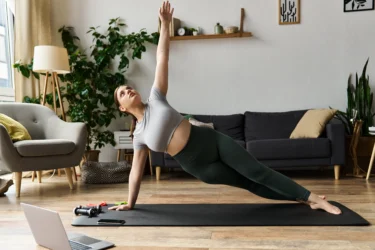
The front plank is a simple form of this exercise and may promote strengthening of the upper as well as lower body. The side plank, on the other hand, helps to strengthen the oblique abdominal muscles. This can be beneficial in reducing belly fat. However, a reverse plank is a slightly uncommon variation of this popular exercise pose. It is, as the name suggests, a reverse of the original position and helps to strengthen your hip muscles (glutes) and hamstrings (back thigh muscle), back & shoulder/
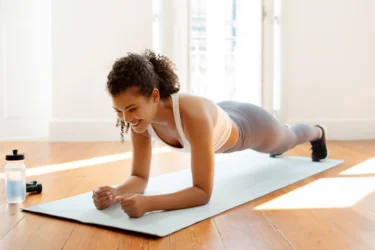
The 2-minute plank test involves holding the traditional plank position for a full two minutes. While this may appear manageable for those who exercise regularly, it can be quite demanding for beginners. This variation serves as an effective way to assess core muscle endurance and overall stability.
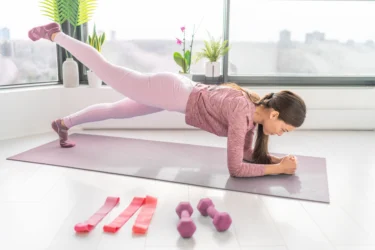
These variations are considered more advanced forms of the plank, as they place greater demand on the core muscles, helping to further enhance strength and stability. To perform them, begin in the standard plank position and lift either one arm or one leg, alternating between sides to increase intensity. For added challenge and variety, these movements can also be combined with side planks to engage a broader range of muscle groups.

This is one of the most challenging and effective plank variations, often recommended for individuals with an established fitness routine. However, with consistent and careful practice, it can also be performed at home. To do this exercise, begin in a side plank position and draw the upper leg towards the body in a movement similar to a crunch. This variation engages the core abdominal muscles while also helping to strengthen the muscles around the hip joints.
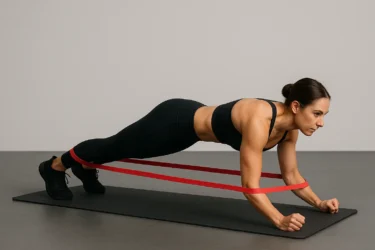
This variation can also be performed using resistance bands and is considered an advanced form of the plank exercise. It is suitable for individuals who have built confidence with the basic variations. To practise this, position yourself in the standard plank and secure a resistance band around your wrists and ankles. While holding the posture, gently push outwards against the resistance. This added tension increases the challenge, helping to further engage and strengthen the muscles and supporting joints.
The plank exercise is primarily aimed at developing stamina, muscular endurance, and core strength. It targets key muscle groups, including the erector spinae (ES), external oblique (EO), and rectus abdominis (RA), all of which play a vital role in maintaining posture and supporting spinal alignment.
Dr. Rajeev Singh, BAMS
Level: Beginner
Type: Forearm Plank (Low Plank)
The Forearm Plank, also known as the Low Plank, is a fundamental core-strengthening exercise that focuses on building endurance, stability, and muscle control. It involves maintaining a straight, aligned position while resting the body’s weight on the forearms and toes.
NOTE: Beginners may start with shorter durations and build up gradually. Proper form is essential to prevent strain, especially on the lower back.
Do not do planks in the following cases:
NOTE: If you experience any of the discomforts or pains mentioned above, it is advisable to consult a medical professional for further guidance before continuing with this exercise.
Ultimately, take time to enjoy the entire process. With consistent effort and patience, you will gradually become stronger and more resilient. As your endurance improves, continue to challenge yourself by adding a few extra seconds to your plank hold — and take pride in your progress.
The plank exercise can contribute to overall calorie expenditure when practised regularly and as part of a balanced fitness routine. For best results, it should be complemented by a healthy and nutritious diet. Incorporating foods such as fresh fruits, whole grains, yoghurt, bananas, avocados, green tea, and lean proteins like fish may support overall well-being and energy levels.
When performing the plank, it is important to maintain proper form. Try to hold the position for 10 seconds at a time between movements, gradually building up to a total of 60 seconds per session, based on your comfort and ability. Consistency and correct technique are key to making steady progress.
Plank exercises involve multiple muscle groups across the body, particularly the core, arms, and shoulders. As a full-body movement, planks may also support improved posture and help reduce strain on the lower back when performed correctly. For this reason, it is essential to maintain proper form during the exercise. Poor technique can lead to unnecessary stress on joints and muscles, potentially resulting in discomfort or injury to areas such as the wrists, shoulders, neck, or lower back.
In both high planks (full arm extended) and low plank (only forearms) exercises, a common mistake is allowing the hips to drop below the natural alignment of the body. This misalignment reduces engagement of the core muscles—one of the primary targets of the exercise—and can place undue strain on the lower back and shoulders. To correct this, ensure your hips remain level and in line with your shoulders throughout the duration of the plank. Maintaining a straight, stable posture is key to performing the exercise safely and effectively.
When performing side planks, placing your supporting arm too far from your body can lead to unnecessary strain on the shoulder, wrist, and neck. To avoid this, your shoulder should be positioned directly above the supporting wrist or elbow, depending on the variation. For correct alignment, ensure your support hand (or forearm) is directly beneath the shoulder, your upper arm is extended vertically above you, and your legs are stretched out in a straight line. This forms a ‘T’ shape with your body and helps maintain balance, stability, and proper muscle engagement.
A common mistake during plank exercises is angling the palms inward towards the centre of the body. This positioning can make it more difficult to stabilise the shoulders and may lead to the chest collapsing towards the floor, increasing the risk of strain. To maintain proper form and reduce the likelihood of injury, ensure your hands are placed parallel to each other, with fingers slightly turned outwards. Keep the elbows straight but not locked, allowing the shoulders to remain engaged and the chest lifted in a stable position.
Also Read: 7 Best Exercises to Lose Weight at Home
Given the numerous benefits associated with this seemingly simple exercise, it is no surprise that the plank posture has gained popularity among fitness enthusiasts. Many fitness professionals have introduced their own innovative variations, offering unique ways to challenge and engage the body. Even if these advanced forms are not accessible at first, the variations and tips outlined here provide effective alternatives that can yield comparable results. As a full-body exercise that complements a wide range of workout routines, the plank is a valuable addition to any fitness programme and well worth incorporating into your regular practice.
Also Read: Benefits of Sarvangasana (Shoulder Stand) and How to Do It By Dr. Himani Bisht
Yes, a 3-minute plank workout is achievable, particularly for those following an advanced fitness routine. For beginners, holding a plank for one minute is generally sufficient and effective. Reaching the three-minute mark typically indicates a higher level of core strength and endurance. However, if you are unable to maintain proper form for up to 120 seconds during an advanced routine, it may suggest the need to further develop your strength or reassess your technique. Ensuring correct posture is essential for both safety and effectiveness.
Incorporating planks into your daily routine can offer several potential benefits, particularly when performed with proper form and as part of a balanced fitness programme. Some of the key advantages may include:
– Improves body flexibility
– Strengthens the arms, legs, and spinal muscles.
– Improves running speed and efficiency
The recommended duration for planking varies depending on individual fitness levels and any underlying medical conditions. For most people, holding a plank for up to two minutes is sufficient to build core strength and endurance. Beginners may start with a 30-second hold and gradually increase the duration as their strength improves. It is always advisable to listen to your body and consult a healthcare or fitness professional if you have any concerns or pre-existing health conditions.
It is common to experience trembling or shaking while holding a plank, particularly when you are new to the exercise. This occurs because the movement requires your muscles to support your entire body weight, placing significant demand on the core, shoulders, arms, and legs. The shaking is a sign that your muscles are being challenged and are working to stabilise your body. As your strength and endurance improve over time, this response typically becomes less pronounced.
No, while plank exercises are highly effective for strengthening the core, spine, and shoulders, as well as supporting posture and flexibility, they alone are not sufficient for overall physical conditioning. Planks can contribute to maintaining fitness and may assist in reducing body fat as part of a broader routine. However, for comprehensive health and visible physical transformation, it is recommended to combine planks with cardiovascular activities such as jogging, cycling, swimming, or walking, along with strength training and a balanced, nutritious diet.
Disclaimer: The information provided here is for educational/awareness purposes only and is not intended to be a substitute for medical treatment by a healthcare professional and should not be relied upon to diagnose or treat any medical condition. The reader should consult a registered medical practitioner to determine the appropriateness of the information and before consuming any medication. PharmEasy does not provide any guarantee or warranty (express or implied) regarding the accuracy, adequacy, completeness, legality, reliability or usefulness of the information; and disclaims any liability arising thereof.
Regular physical activity is a vital component of maintaining overall health. Exercise contributes not only to weight management but also supports cardiovascular health, bone strength, mood regulation, and general wellbeing.
It is important to understand that both exercise and diet work together to support sustainable weight management. If one is prioritised while the other is neglected for example, exercising regularly without dietary changes, or following a diet without physical activity the body’s response may vary. This could lead to slower progress, fatigue, or changes in metabolism1.
Additionally, other factors such as sleep quality, stress levels, certain medical conditions (e.g., hypothyroidism, polycystic ovary syndrome), and medications can influence how the body responds to efforts aimed at weight loss.
For individuals diagnosed with conditions such as diabetes, incorporating exercises for diabetes which are appropriate to their health status can be beneficial. However, any exercise regimen should be discussed with a healthcare provider to ensure safety and effectiveness.
Here, we outline seven effective and popular exercise programmes that can be practised at home, helping you improve strength, fitness, and overall wellbeing, without the need for gym access or specialised equipment.
For those aiming to manage their weight, a combination of cardiovascular activity and resistance training, performed consistently, may offer benefits when paired with a balanced, calorie-conscious diet. Incorporating resistance training at least twice a week may help maintain muscle mass during weight loss.
Some research has explored whether the timing of exercise, such as working out in the morning affects weight loss or muscle development2. Cortisol, a hormone that follows a natural daily rhythm, typically peaks in the early morning. However, its effects are complex. Elevated cortisol levels under stress can sometimes contribute to muscle breakdown and fat retention. Current evidence does not conclusively support a “best” time of day for exercise that applies to everyone.

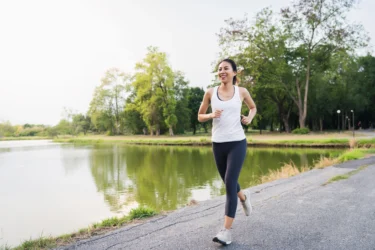
Walking is widely regarded as an accessible and low-impact form of cardiovascular exercise. When performed at a brisk pace, it can support calorie expenditure and be easily integrated into daily routines. It is also gentle on the joints, making it suitable for individuals across a wide range of fitness levels.
Some observational studies have noted that individuals who walk for 50–70 minutes, three times per week, may experience modest reductions in body fat and waist circumference over time. However, results can vary depending on individual factors such as diet, metabolism, and overall activity levels.
Jogging and running are more vigorous forms of aerobic exercise and involve higher levels of intensity. These activities primarily engage the lower body and cardiovascular system, and they may contribute to improved endurance, heart health, and calorie expenditure. The key distinction between jogging and running lies in the pace, jogging typically ranges from 6–9 km/h, while running generally starts from around 10 km/h.
On average, a person may burn approximately 298 calories in 30 minutes of jogging and 372 calories in 30 minutes of running, though actual figures depend on body weight, intensity, and terrain. While these exercises can assist in reducing overall body fat, it is important to note that fat loss from specific areas, such as the abdomen cannot be targeted directly and depends on total fat reduction and individual physiology3.
Although jogging and running can help maintain muscle tone, especially in the lower body, significant gains in muscular strength typically require resistance training or structured strength-based workouts.
Exercise Pattern
Set aside 1 hour of your time and include these exercises in your routine.
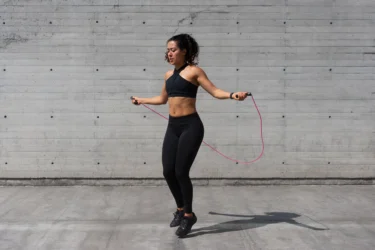
While skipping can assist with muscle toning and calorie expenditure, significant muscle strength gains require dedicated resistance training. It may also support mood and stress management, but it is not a substitute for professional mental health care4.
As with any exercise, individual results may vary depending on fitness level, diet, and consistency.
Exercise Pattern
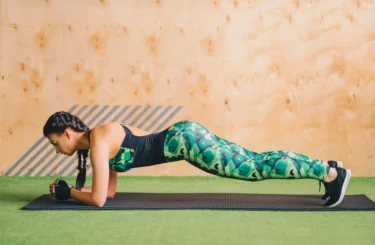
The plank is a core stabilisation exercise that targets multiple muscle groups including the abdominals, shoulders, back, chest, and hips. Though it appears simple, it requires muscular endurance and can be physically demanding when performed correctly.
Planks help improve core strength, posture, and body balance, and come in various forms to target different muscle areas. While not designed for high calorie burn or direct fat loss, planks are valuable for enhancing overall stability and muscular endurance5.
Increasing the duration and consistency of plank practice may lead to better functional strength and support in other forms of exercise.
Plank Exercise Variations
Exercise Pattern
The Reverse Plank: This exercise is a variation of the standard plank, performed in a reversed position. It is an excellent way to stretch the body while also helping to reduce excess fat and calories. Additionally, this workout strengthens the core, shoulders, back, chest, and gluteal muscles.
Exercise Pattern
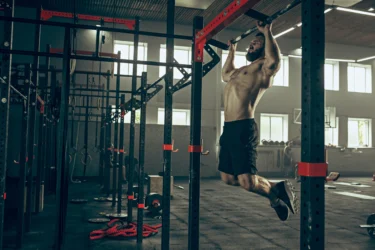
Push-ups are a widely practised bodyweight strength exercise that require no equipment and can be performed virtually anywhere. They primarily target the chest, triceps, shoulders, and core, helping to build upper body strength and muscular endurance.
While push-ups do not burn as many calories as aerobic exercises, they contribute to muscle development, which may support long-term weight management by modestly increasing resting metabolic rate6.
Regular push-up training can improve overall physical stability and strength, particularly when combined with other forms of exercise such as cardio or resistance training.
Exercise Pattern
Push-ups are a widely practised bodyweight strength exercise that require no equipment and can be performed anywhere. They primarily target the chest, triceps, shoulders, and core, contributing to the development of upper body strength and enhancing muscular endurance.
While push-ups do not burn as many calories as aerobic exercises, they contribute to muscle development, which may support long-term weight management by modestly increasing resting metabolic rate.
Regular push-up training can improve overall physical stability and strength, particularly when combined with other forms of exercise such as cardio or resistance training.
Exercise Pattern
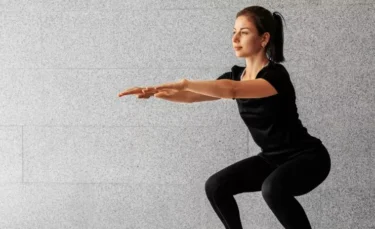
Squats are a lower-body strength exercise that primarily target the thighs, hips, and glutes. They help improve mobility, balance, and muscular endurance, making them a fundamental part of many fitness routines.
While squats may contribute to calorie expenditure and muscle toning, their main benefit lies in strengthening the lower body. Beginners are often advised to start with 3 sets of 12–15 repetitions, focusing on proper form to avoid injury and maximise effectiveness7.
Exercise Pattern:
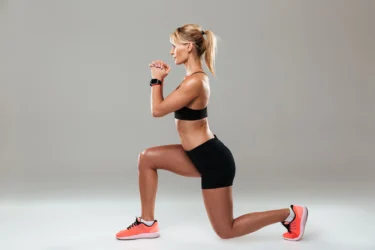
Lunges are a lower-body strength training exercise that primarily target the quadriceps, glutes, hamstrings, and engage the core for stability. They are effective for building lean muscle, improving balance, coordination, and lower body endurance.
While lunges can be part of a fat-loss programme when included in a high-intensity routine, their primary role is in toning and strengthening. Using added weights can further enhance their effectiveness, especially for athletic training and improved overall fitness8.
Exercise Pattern
Along with exercises that need to be done at your place for weight loss. There are other factors and methods that can be helpful for weight management.
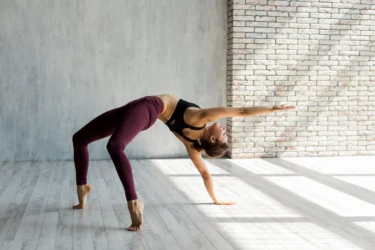
Yoga is an ancient practice that integrates physical postures, controlled breathing, mindfulness, and relaxation. When combined with healthy eating and regular activity, yoga may support weight management, improve mental wellbeing, and enhance body awareness9.
While not primarily focused on calorie burning, yoga promotes stress reduction, which can positively influence lifestyle habits. Some forms of yoga may also support flexibility, balance, and metabolic health such as yoga for diabetes, making it a valuable addition to a holistic wellness routine.
Along with supporting weight management, yoga offers a range of additional benefits, including:
Specific yoga poses play a supportive role in weight management by enhancing muscle tone, balance, and concentration. Regular practice helps the body adapt to these movements, allowing you to gradually improve strength, flexibility, and mind-body awareness, all of which contribute to overall well-being and fitness.
Some of the yoga poses that should be practiced for weight loss are:
Below is a general guide to the approximate number of calories burned during various exercises, based on moderate intensity. Actual values can vary depending on factors such as body weight, age, fitness level, workout intensity, and duration:
While many prefer to exercise in the morning, especially on an empty stomach, believing it may support fat metabolism, the most important factor is consistency. Morning workouts can help align your circadian rhythm, supporting better sleep and routine adherence over time.
Some studies suggest evening workouts may improve performance due to increased body temperature and oxygen efficiency. However, research remains inconclusive. Ultimately, the best time to exercise is the time that suits your schedule and lifestyle, allowing you to remain active regularly and sustainably.
Also Read: 8 Effective Exercises That Help with Weight Loss!
Follow these tips to make sure your weight loss programme at home is done properly:
Also Read: Benefits of Doing the Plank Exercise Every Day
No, weight loss is a combination of regular workouts and a proper diet. It is important to ensure to follow both to achieve the desired results.
No, sweating is your body’s natural way of regulating temperature. As your internal temperature rises, your body releases sweat, which cools the skin through evaporation. It is a sign of thermoregulation, not necessarily an indicator of calorie burn or workout intensity.
To improve fitness and maintain good health, it is advisable to exercise at least 2–3 times per week consistently, rather than sporadically. Regular workouts yield better long-term results.
A general way to estimate daily calorie intake for weight maintenance is to multiply your ideal body weight (in pounds) by 14. For example, if your ideal weight is 135 pounds, you may need around 1,890 calories per day (135 × 14).
Some initial weight loss in a week is possible through regular exercise, mindful eating, and increased activity. However, early changes are often due to water loss, not fat. For safe and lasting results, aim for 0.5 to 1 kg per week through a balanced diet, moderate calorie deficit, and consistent physical activity.
Weight loss occurs when you burn more calories than you consume. While reducing calorie intake can lead to a calorie deficit, completely avoiding food is not a healthy approach. The body may slow its metabolism and trigger energy conservation, making weight loss harder over time. It’s essential to eat balanced, nutritious meals to support both health and sustainable weight loss.
Any foods with high carbohydrates and fats should be avoided if you want to lose weight. These include french fries, potato chips, white bread, pastries, cookies and sugary drinks.
Disclaimer: The information provided here is for educational/awareness purposes only and is not intended to be a substitute for medical treatment by a healthcare professional and should not be relied upon to diagnose or treat any medical condition. The reader should consult a registered medical practitioner to determine the appropriateness of the information and before consuming any medication. PharmEasy does not provide any guarantee or warranty (express or implied) regarding the accuracy, adequacy, completeness, legality, reliability or usefulness of the information; and disclaims any liability arising thereof.